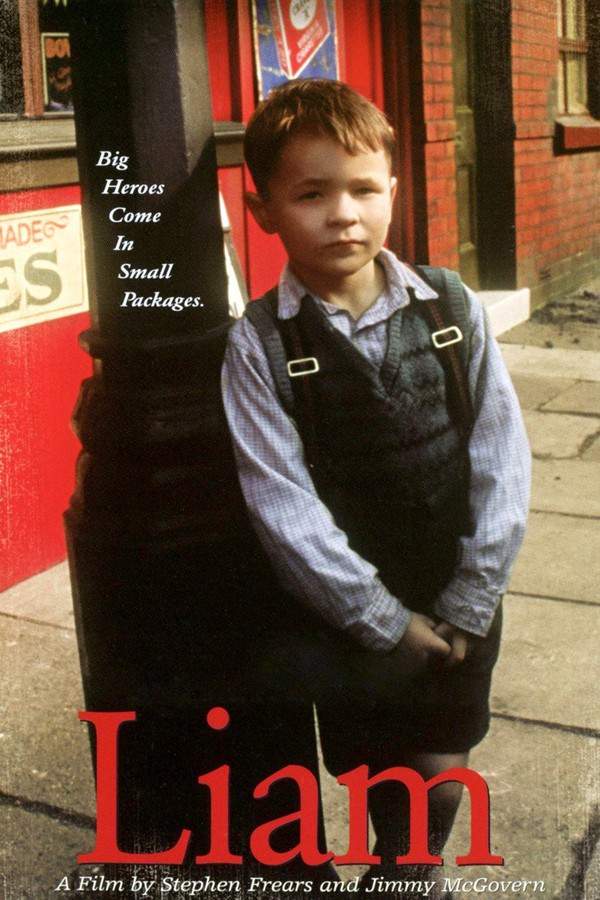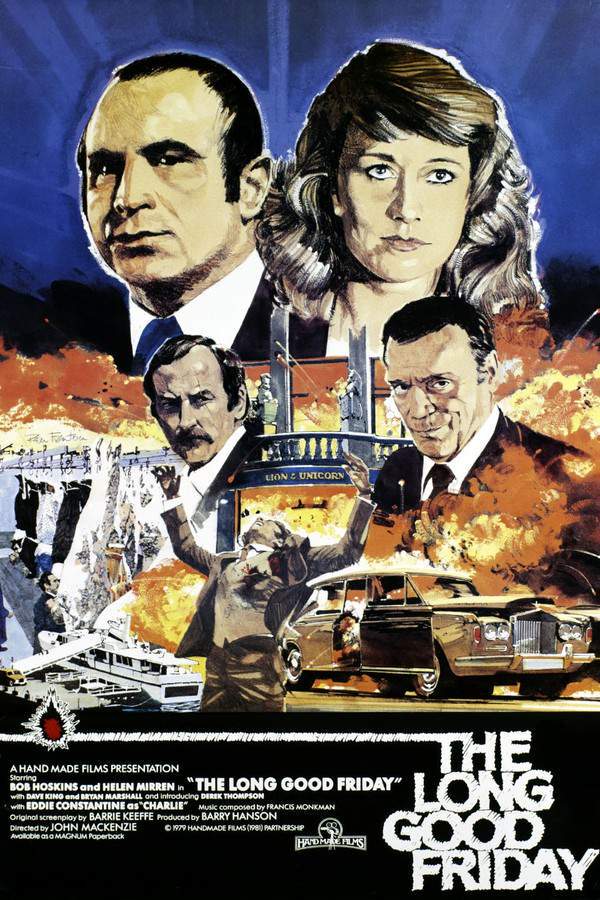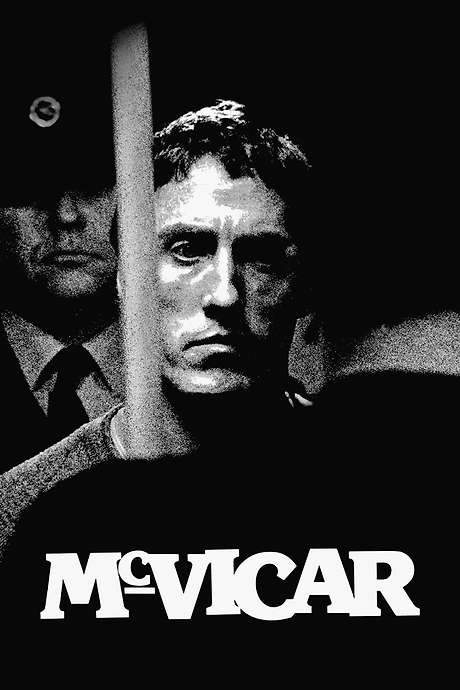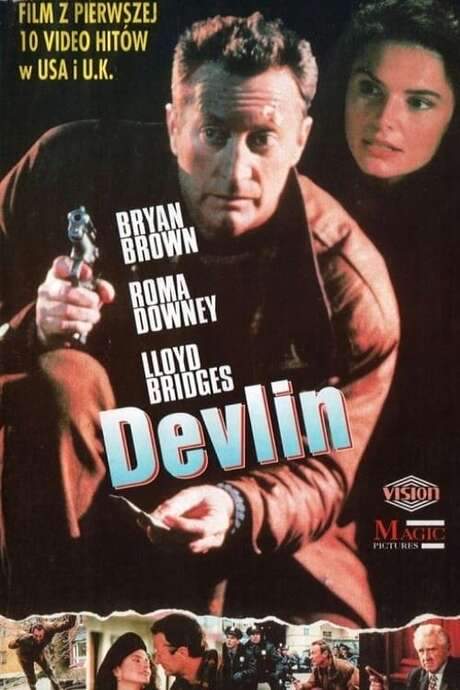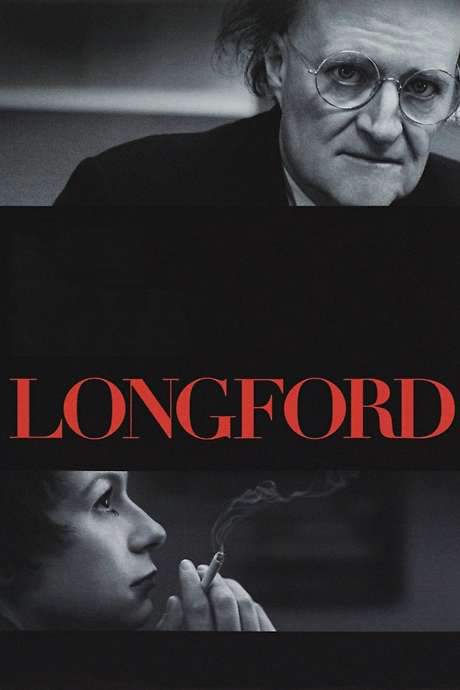
Longford
Year: 2006
Runtime: 88 mins
Language: English
Director: Tom Hooper
A portrait of Lord Longford, the tire‑less British Labour peer who devoted his life to prison reform and the controversial cause of securing clemency for a convicted woman. His relentless crusade to win her release sparked fierce political debate, personal attacks and conflict, highlighting his commitment to compassion over public opinion.
Warning: spoilers below!
Haven’t seen Longford yet? This summary contains major spoilers. Bookmark the page, watch the movie, and come back for the full breakdown. If you're ready, scroll on and relive the story!
Longford (2006) – Full Plot Summary & Ending Explained
Read the complete plot breakdown of Longford (2006), including all key story events, major twists, and the ending explained in detail. Discover what really happened—and what it all means.
In 1987, a radio discussion about the controversial book Saints becomes a test of faith, conviction, and the limits of reform for Lord Longford [Jim Broadbent]. The broadcast opens with a calm, introspective tone as the host invites listeners to share their views, but the mood shifts when a caller rails against Longford’s long-running campaign to secure parole for Hindley. Longford, steadfast in his belief in the possibility of redemption for every person, refuses to engage with Hindley on air, insisting that the focus of the program remains on the broader questions of punishment, rehabilitation, and the meaning of Saints rather than the specifics of Hindley’s case. The exchange exposes the widening divide between Longford’s public persona and the harsh, visceral responses of a society outraged by Hindley’s crimes and the very idea that she might ever be freed.
The film’s heart lies in a flashback to the late 1960s, set against the hush of the House of Lords, where Longford presides over a small reception for ex-convicts he has visited and mentored during their imprisonment. He is drawn into a letter from Hindley, one of Britain’s most infamous criminals, who has initiated contact from behind bars. Hindley requests books and, more provocatively, asks for a chance to meet Ian Brady [Andy Serkis], her former partner who stands accused of three murders. Longford is startled by the request and warns Hindley that any contact with Brady could jeopardize her chances of parole—a calculation that rests on whether she has truly reformed and whether she can resist Brady’s influence. Hindley, for her part, appears to understand the gravity of the decision while probing Longford’s willingness to see beyond the verdicts and public fury.
From that moment, Longford’s mission evolves into a public, drawn-out campaign that questions whether moral transformation is possible after such violence. He argues that rehabilitation is not only possible but a test of the justice system’s humanity, pointing to the trial judge’s speculation that Hindley’s release might someday be contemplated if she shows genuine change away from Brady’s coercive circle. The debate becomes a crucible for Longford’s faith and his relationship with Hindley, who, in his eyes, embodies the complex ambiguity of sin, guilt, and the potential for rehabilitation. The story traces how this conviction strains Longford’s friendships, tests his family’s patience, and attracts relentless media scrutiny that portrays him as either a foolish sentimentalist or a stubborn idealist.
Throughout the 1970s and into the 1980s, Longford’s steadfast stance continues to collide with public opinion, political caution, and the painful memories of victims’ families. His wife, Lady Elizabeth Longford [Lindsay Duncan], stands at his side, offering support while confronting the personal toll of a campaign that many believe is harmful or naïve. The film also depicts the broader social and political context of the era, including the taint of the press and the moral hazard of turning a paroled figure into a national spectacle. Yet Longford remains unyielding, arguing that confronting uncomfortable truths and choosing mercy over punishment can reflect the best aspects of a humane, Christian tradition.
As the years unfold, Hindley’s own disclosures complicate the narrative. In a later parole assessment, she reveals details of additional violence that had not previously come to light, casting new light on the possibility of her release while also confirming the gravity of her past actions. Her revelations lead to renewed police cooperation as investigators search for missing evidence and bodies, illustrating how the quest for truth can clash with emotional wounds and political agendas. Longford’s public defense of Hindley persists even as the case becomes more contentious, with critics labeling his stance as dangerous or misguided.
The film builds to a quiet, moving conclusion that juxtaposes belief with aging, memory with consequence. Longford, now an elderly figure, continues to visit Hindley in the grounds of her prison, his health fragile but his resolve intact. The audience learns that, in the late 1990s, Hindley’s health and the legal climate shift the odds against parole, even as Longford’s lifelong conviction remains unshaken. The final credits inform the viewer of the real-life outcomes: Longford dies in 2001, and Hindley follows in 2002, both having lived with the repercussions of a controversial, enduring campaign that challenged conventional notions of justice, mercy, and the possibility of true reform.
This portrayal rests on a careful balance of empathy and critique, inviting viewers to weigh the moral complexities behind a public crusade. It is a meditation on how faith, memory, and the slow tides of time can transform a single, polarizing issue into a lasting national conversation. The film is anchored by its central performances, particularly the portrayal of Longford’s unwavering faith and Hindley’s elusive, guarded humanity, as well as the historically resonant figures that populate the supporting world—figures who illuminate the era’s political theater and the personal costs of a campaign that refused to bow to public sentiment alone.
Last Updated: October 09, 2025 at 15:04
Unlock the Full Story of Longford
Don't stop at just watching — explore Longford in full detail. From the complete plot summary and scene-by-scene timeline to character breakdowns, thematic analysis, and a deep dive into the ending — every page helps you truly understand what Longford is all about. Plus, discover what's next after the movie.
Longford Timeline
Track the full timeline of Longford with every major event arranged chronologically. Perfect for decoding non-linear storytelling, flashbacks, or parallel narratives with a clear scene-by-scene breakdown.

Characters, Settings & Themes in Longford
Discover the characters, locations, and core themes that shape Longford. Get insights into symbolic elements, setting significance, and deeper narrative meaning — ideal for thematic analysis and movie breakdowns.

Similar Movies to Longford
Discover movies like Longford that share similar genres, themes, and storytelling elements. Whether you’re drawn to the atmosphere, character arcs, or plot structure, these curated recommendations will help you explore more films you’ll love.
Explore More About Movie Longford
Longford (2006) Scene-by-Scene Movie Timeline
Longford (2006) Movie Characters, Themes & Settings
Longford (2006) Spoiler-Free Summary & Key Flow
Movies Like Longford – Similar Titles You’ll Enjoy
In the Name of the Father (1993) Full Summary & Key Details
Liam (2001) Full Movie Breakdown
Land of the Blind (2006) Detailed Story Recap
The Long Good Friday (1982) Detailed Story Recap
The Long Firm (1000) Spoiler-Packed Plot Recap
Let Him Have It (1991) Plot Summary & Ending Explained
For the Term of His Natural Life (1000) Plot Summary & Ending Explained
McVicar (1980) Film Overview & Timeline
Des (1000) Film Overview & Timeline
The Long Memory (1953) Plot Summary & Ending Explained
Love Lies Bleeding (1993) Film Overview & Timeline
Some Mother’s Son (1996) Complete Plot Breakdown
Murderland (1000) Ending Explained & Film Insights
Devlin (1992) Complete Plot Breakdown
Adam’s Woman (1970) Complete Plot Breakdown




